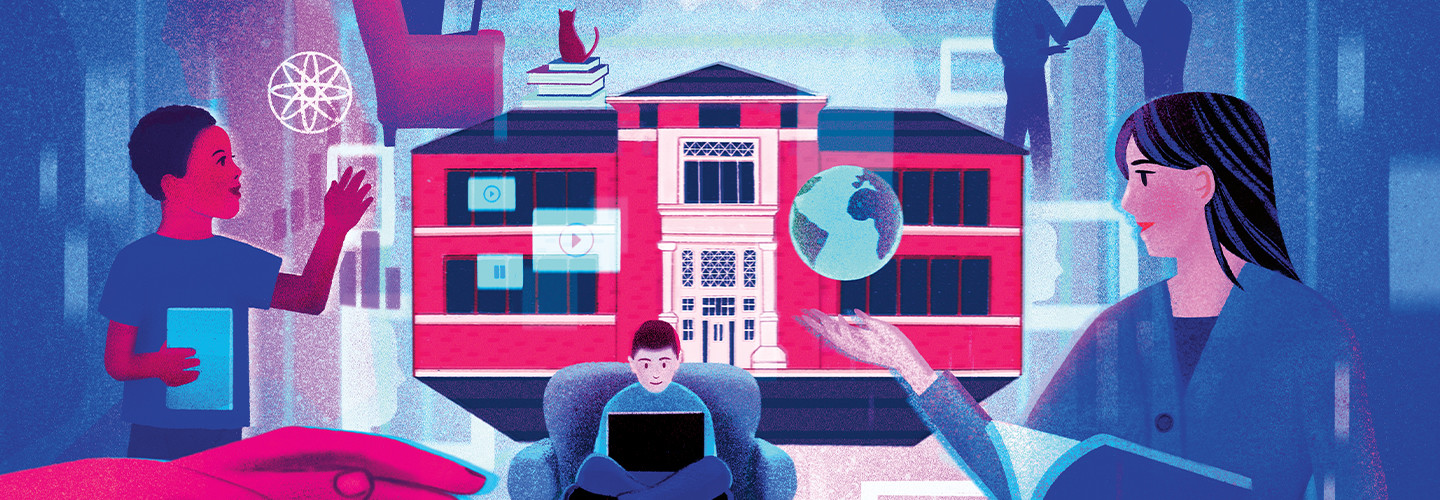Since then, FSPS educators have delivered 2,500 mobile hotspots to students and their families, turned school parking lots into Wi-Fi access hubs and ensured that all students have their own Chromebooks. Much of the district’s online instruction has been delivered via Zoom, and teachers frequently make use of free, game-based learning platforms such as Kahoot. “The students are very tech savvy,” says Samantha Hall, assistant director of district innovation. “When you teach them the basics, they learn very quickly.”
The district then hired teachers, many internally, specifically to staff the virtual program. Now, as officials plan to make the virtual option permanent, they are seeking ways to continuously improve. The district is running focus groups with parents to obtain valuable feedback, and next year teachers will create a district-built virtual curriculum around state standards.
“We’ve been looking at a virtual option for a few years,” notes Martin Mahan, deputy superintendent. “We’ve found there’s a certain population of students who thrive in a virtual setting, and the pandemic has forced us to look at things through a different lens. We’re trying to find the value in every assignment, and this really caused us to look more at what is being taught, and how.”
Virtual Learning Provides a Better Fit for Some Students
Fort Smith Public Schools is not alone. While many parents, students and teachers across the country have leapt at the opportunity to get back into physical classrooms as quickly as possible, others have found virtual learning to be a great fit.
This has led a number of school districts to seize the moment and accelerate plans for virtual-only schools that will continue to educate students remotely, even after the pandemic ends. A fall 2020 RAND survey of district leaders found that 1 in 5 schools have already adopted or plan to adopt virtual schooling after the pandemic.
“Many students who would never have seen themselves as online students realized the model was working better for them,” says Joseph South, chief learning officer for ISTE, an organization that advocates for technology in education. “Some are realizing that this is how they want school to go for them, and the districts realize they can either lose these students or open their own virtual schools at the district level.”
South notes that virtual charter schools have existed for years, but individual districts are just now starting to get in on the game. Students, he says, may opt for a district-run virtual school over other online options as a way to stay connected to their communities and participate in extracurricular activities with their friends. But, South says, it is important for new virtual schools to train teachers to tailor instruction for a remote model.












